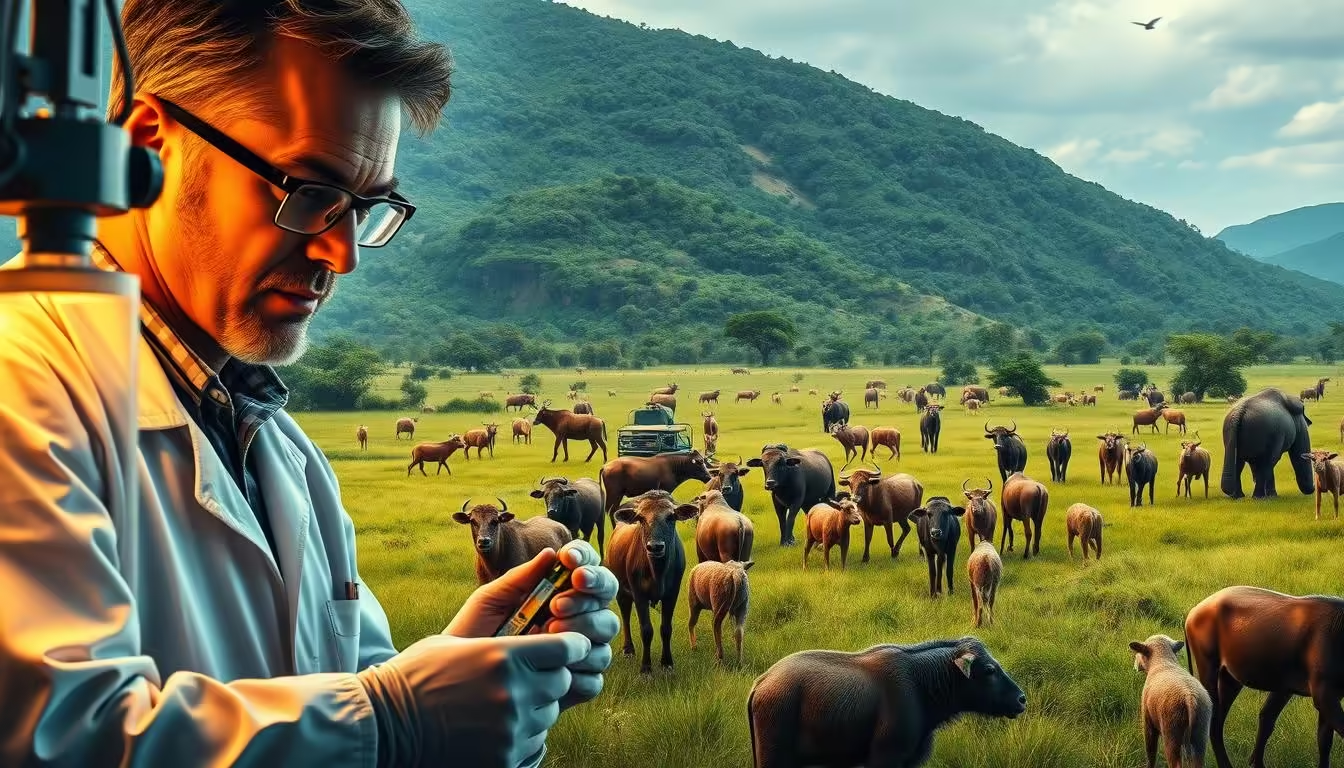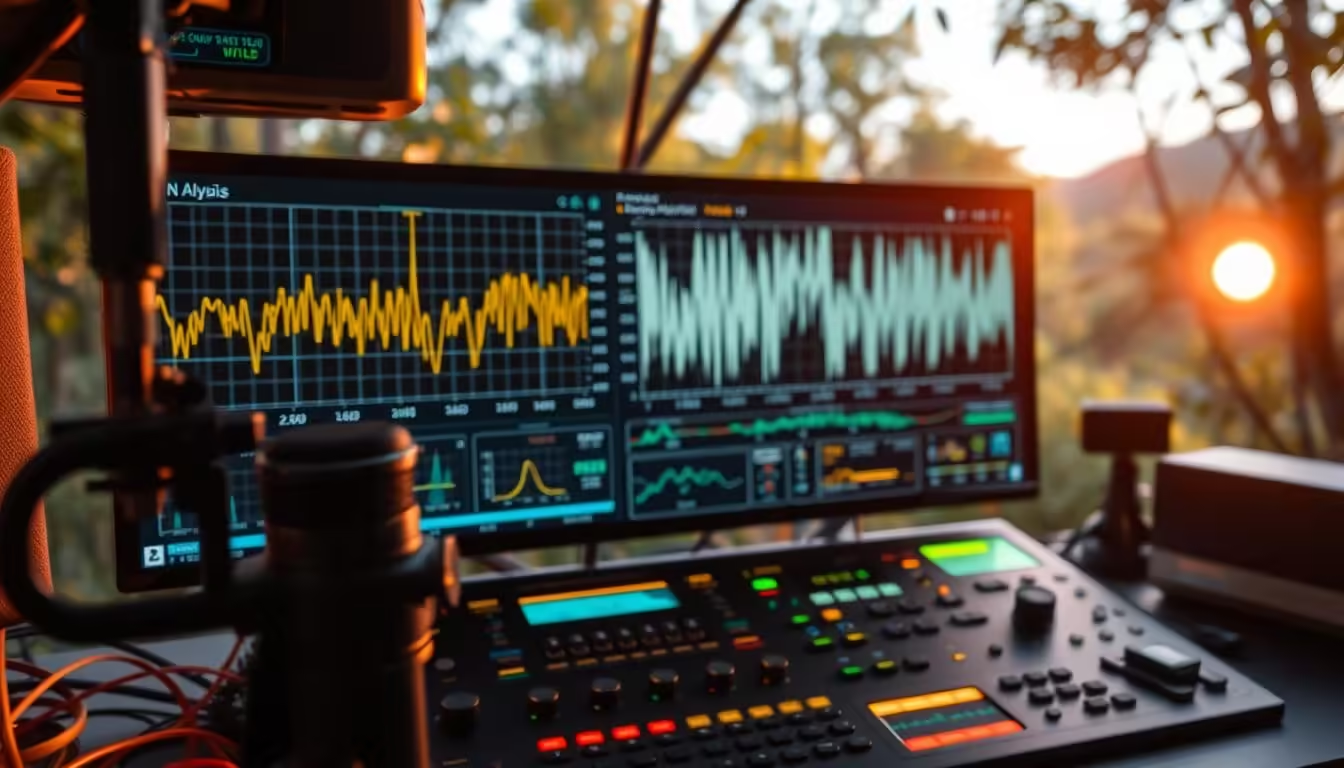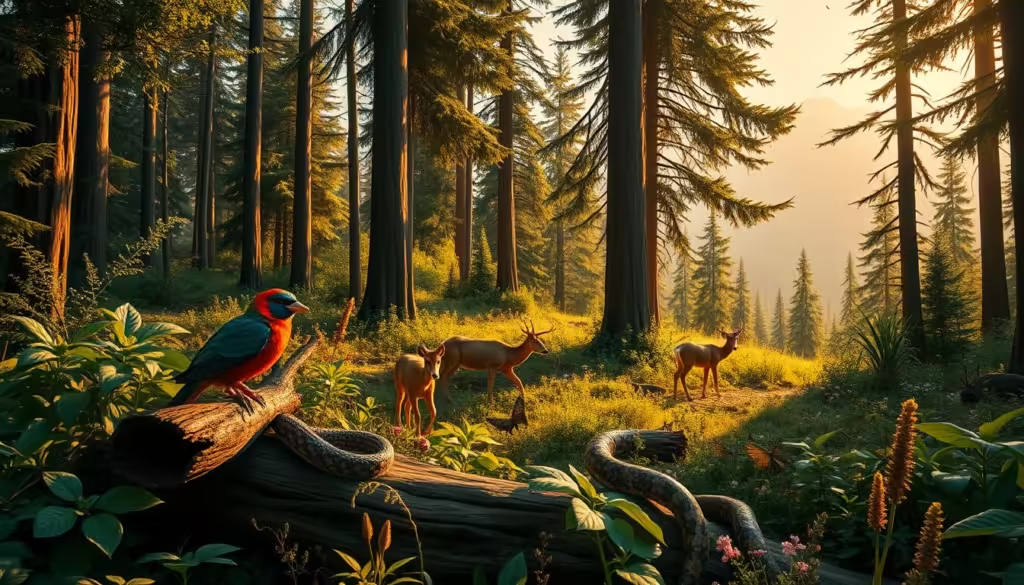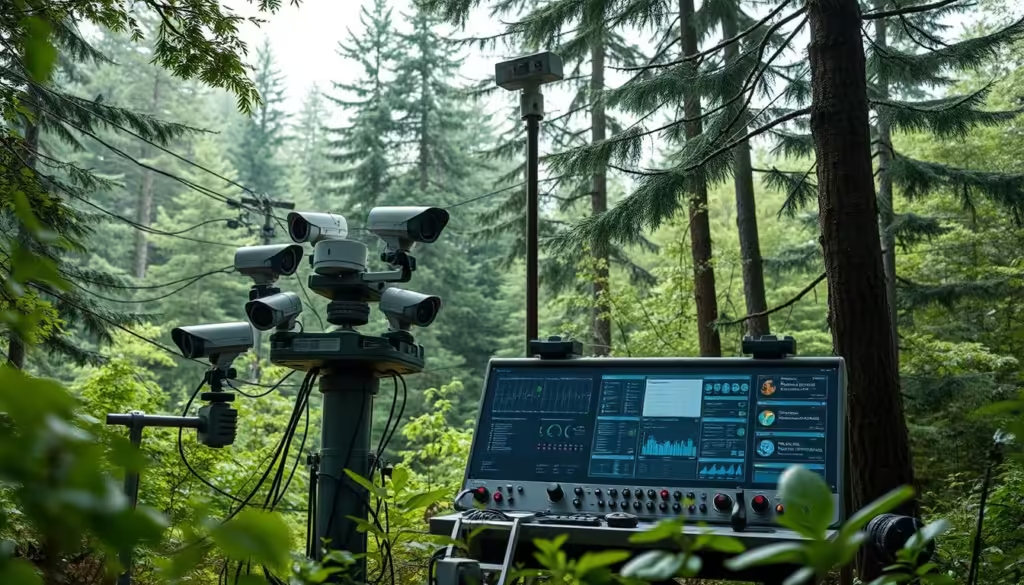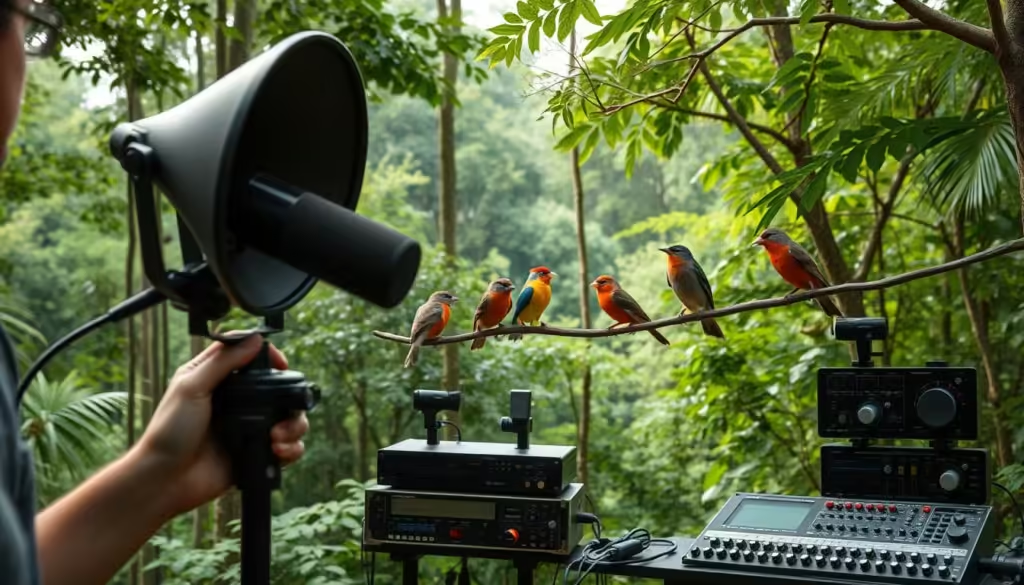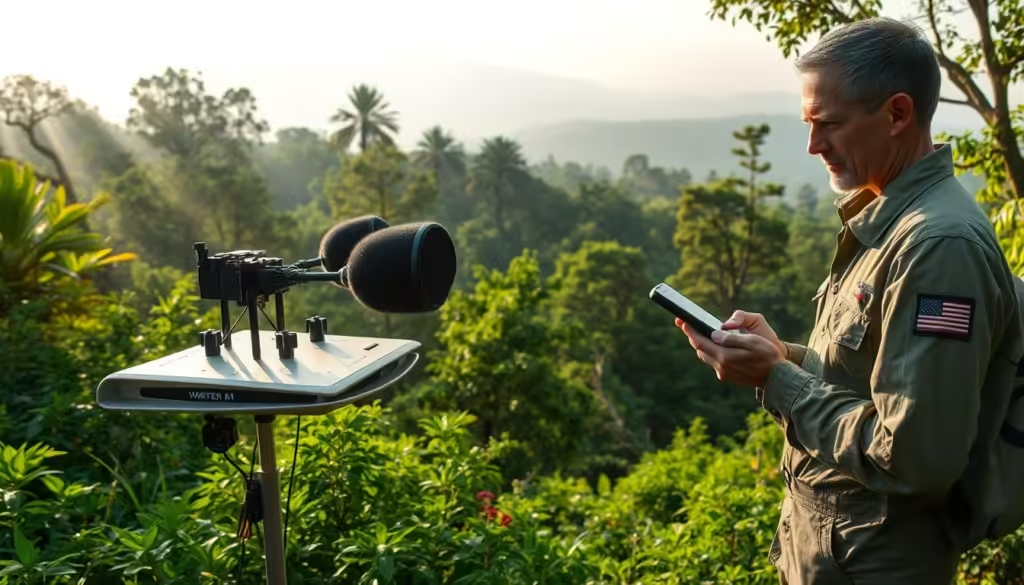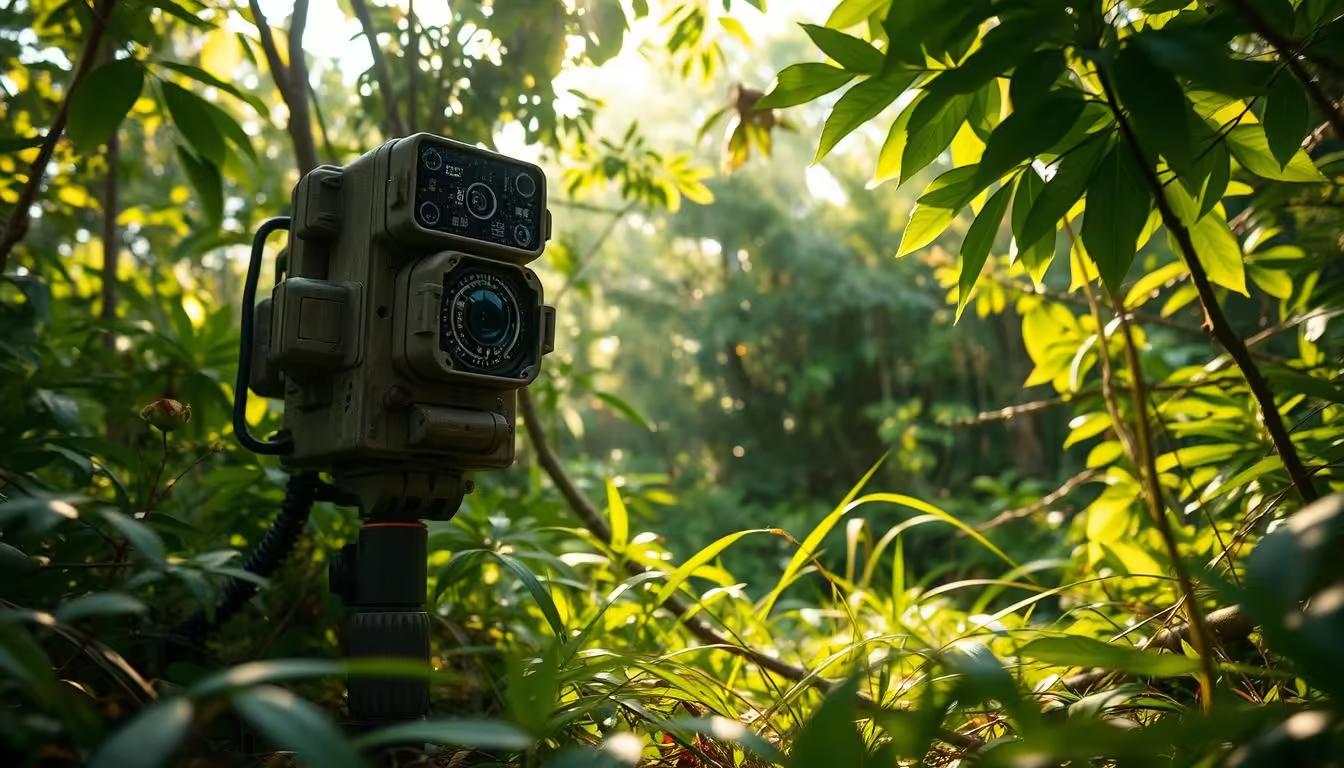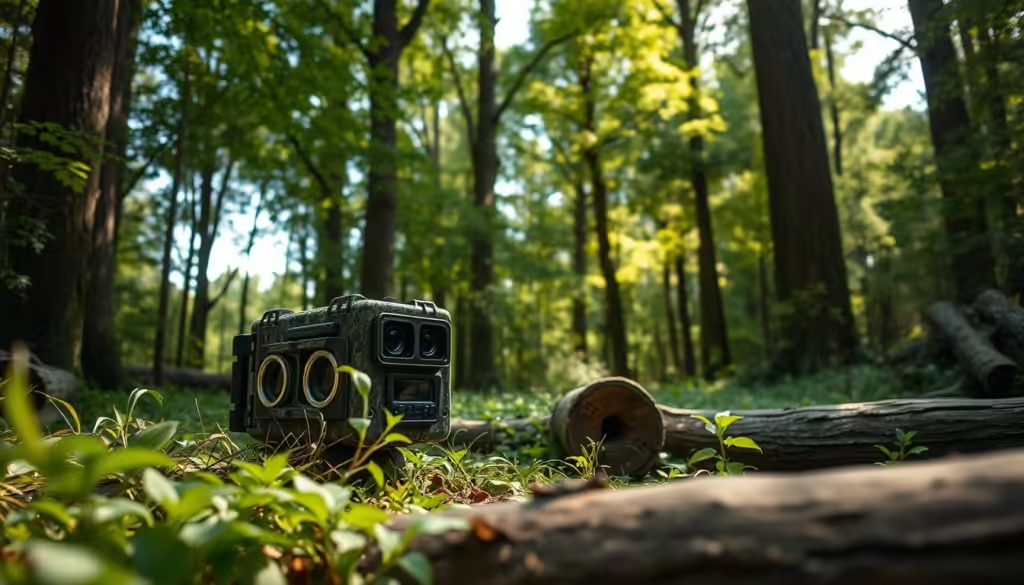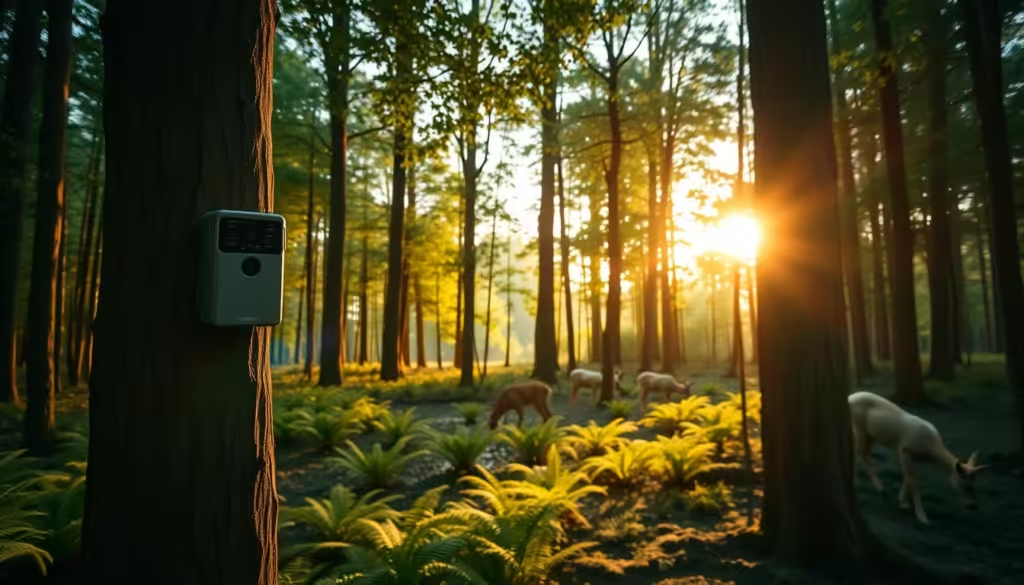The application of genomics in conservation efforts has revolutionized the way we protect endangered species. By analyzing the genetic makeup of these species, scientists can identify the most effective strategies for preserving genetic diversity.
This approach not only helps in understanding the genetic factors that contribute to the health and resilience of endangered species but also informs breeding programs aimed at producing healthier animals. As a result, conservation efforts become more targeted and effective, ultimately contributing to the long-term conservation and sustainability of these species.
Key Takeaways
- Genomics plays a crucial role in protecting endangered species.
- Preserving genetic diversity is essential for the long-term survival of species.
- Genomic analysis informs breeding programs for healthier animals.
- Targeted conservation efforts lead to more effective species protection.
- The application of genomics enhances the sustainability of conservation initiatives.
The Critical State of Biodiversity on Earth
The Earth’s biodiversity is facing an unprecedented crisis, with species disappearing at an alarming rate. Human activities and climate change have significantly contributed to the escalating extinction rates, threatening the delicate balance of ecosystems worldwide.
Current extinction rates and their implications
Recent studies indicate that the current rate of extinction is 100 to 1,000 times higher than the natural rate. This has severe implications for ecosystem health, as the loss of key species can lead to cascading effects, potentially resulting in the collapse of entire ecosystems.
| Category | Extinction Rate | Implication |
|---|---|---|
| Amphibians | High | Ecosystem disruption |
| Mammals | Moderate | Loss of biodiversity |
| Birds | Low to Moderate | Ecological imbalance |
The importance of preserving endangered species
Preserving endangered species is crucial not only for maintaining biodiversity but also for ensuring the long-term health of ecosystems. Conservation efforts, supported by genomic technologies, play a vital role in protecting these species.
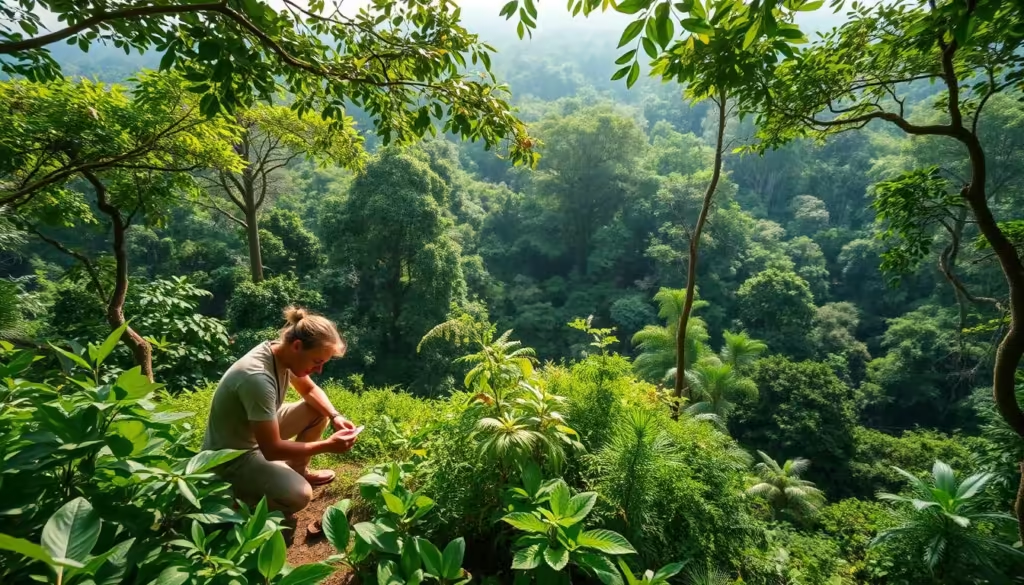
Understanding Genomics: The Science Behind Species Conservation
The field of genomics has revolutionized the way we approach species conservation by providing unprecedented insights into the genetic makeup of endangered species. Genomics involves the study of an organism’s complete DNA sequence, offering a comprehensive understanding of its genetic diversity.
What is genomics and how does it work?
Genomics is a powerful tool that enables scientists to analyze the genetic information of organisms. By examining the DNA of endangered species, researchers can identify genetic variations that are crucial for survival and adaptation. This information is vital for developing effective conservation strategies.
The evolution of genomic technologies in conservation
The application of genomic technologies in conservation has undergone significant advancements. Key developments include:
- Improved DNA analysis techniques
- Whole genome sequencing
- Advanced data analysis tools
From basic DNA analysis to whole genome sequencing
The progression from basic DNA analysis to whole genome sequencing has been a game-changer in conservation genomics. Whole genome sequencing allows for the detailed examination of an organism’s entire genetic code, providing insights into its evolutionary history, genetic diversity, and potential vulnerabilities.

These advancements have transformed the field of conservation biology, enabling more precise and effective conservation efforts.
Genetic Diversity: The Foundation of Species Survival
The health and resilience of populations depend significantly on their genetic diversity. Genetic diversity is the variety of different genes and alleles within a species or population, which is crucial for its ability to adapt to changing environments and withstand diseases.
Why genetic diversity matters for population health
Genetic diversity matters because it allows populations to evolve and adapt over time. A diverse gene pool provides the raw material for natural selection to act upon, enabling populations to respond to selection pressures such as environmental changes or disease outbreaks. Populations with high genetic diversity are more likely to have individuals with traits that confer resistance to diseases or enable them to survive in changing conditions.
| Benefits of Genetic Diversity | Description |
|---|---|
| Adaptability | Allows populations to adapt to changing environments. |
| Disease Resistance | Provides a higher likelihood of individuals having disease-resistant traits. |
| Resilience | Enhances the overall resilience of populations to environmental stresses. |
How inbreeding threatens endangered species
Inbreeding, or the breeding of individuals that are closely related, can lead to a loss of genetic diversity. This reduction in genetic diversity can make populations more vulnerable to extinction by reducing their ability to adapt to changing conditions.
The genetic consequences of small population sizes
Small population sizes can lead to inbreeding depression, where the offspring of closely related individuals have reduced fitness and viability. This can further threaten the survival of endangered species.
Inbreeding depression can manifest as reduced fertility, increased susceptibility to diseases, and lower survival rates among offspring. Conservation efforts often focus on maintaining or increasing population sizes to mitigate these effects.

Genomic Tools Revolutionizing Conservation Efforts
Genomic technologies are revolutionizing the way we approach conservation, providing innovative solutions to preserve biodiversity. The integration of genomics into conservation biology has opened new avenues for protecting endangered species and ecosystems.
DNA Sequencing and Genome Mapping
DNA sequencing and genome mapping are crucial genomic tools that have significantly advanced our understanding of species genetics. By analyzing the genetic makeup of endangered species, conservationists can identify genetic variations that are essential for survival.
For instance, a study on the genetic diversity of the mountain gorilla population used genome mapping to identify individuals with the highest genetic value for breeding, thus enhancing the population’s overall health.
Environmental DNA (eDNA) Sampling
Environmental DNA (eDNA) sampling is a non-invasive technique that involves analyzing DNA present in environmental samples such as water or soil. This method allows researchers to detect the presence of species without direct observation.
“eDNA sampling has revolutionized the way we monitor biodiversity, enabling us to track species presence and abundance with unprecedented accuracy.”
Gene Editing Technologies like CRISPR
Gene editing technologies, such as CRISPR/Cas9, offer the potential to directly modify the genomes of endangered species. This could be used to introduce genetic traits that enhance survival or to eliminate harmful genetic mutations.
| Genomic Tool | Application in Conservation |
|---|---|
| DNA Sequencing | Analyzing genetic diversity and identifying beneficial traits |
| eDNA Sampling | Monitoring species presence without direct observation |
| CRISPR/Cas9 | Editing genomes to enhance survival traits or remove harmful mutations |

The application of these genomic tools is transforming conservation efforts, providing new hope for the protection of endangered species. As these technologies continue to evolve, their impact on conservation is likely to grow, offering innovative solutions to the challenges faced by conservationists.
Identifying and Preserving Genetic Diversity Through Technology
Advancements in technology have revolutionized the field of conservation genetics, enabling scientists to identify and preserve genetic diversity more effectively than ever before. This is crucial for the survival of endangered species, as genetic diversity provides the raw material for adaptation and evolution.
Genetic Bottlenecks and Their Detection
Genetic bottlenecks occur when a population experiences a significant reduction in size, leading to a loss of genetic variation. Detecting these bottlenecks is vital for conservation efforts. Genomic technologies can identify bottlenecks by analyzing the genetic diversity within a population.
- Analyzing DNA samples to assess genetic diversity
- Using genomic data to identify populations at risk
- Developing strategies to mitigate the effects of bottlenecks
Creating Genetic Repositories and Biobanks
Genetic repositories and biobanks are essential for preserving genetic material for future use. These repositories store DNA samples, germplasm, and other biological materials that can be used in breeding programs or for research purposes.
Cryopreservation of Genetic Material
Cryopreservation involves freezing genetic material at very low temperatures to preserve it for extended periods. This technique is particularly useful for storing genetic samples from endangered species.
“Cryopreservation is a powerful tool for conservation, allowing us to preserve genetic material that can be used to restore populations or even bring back extinct species.”
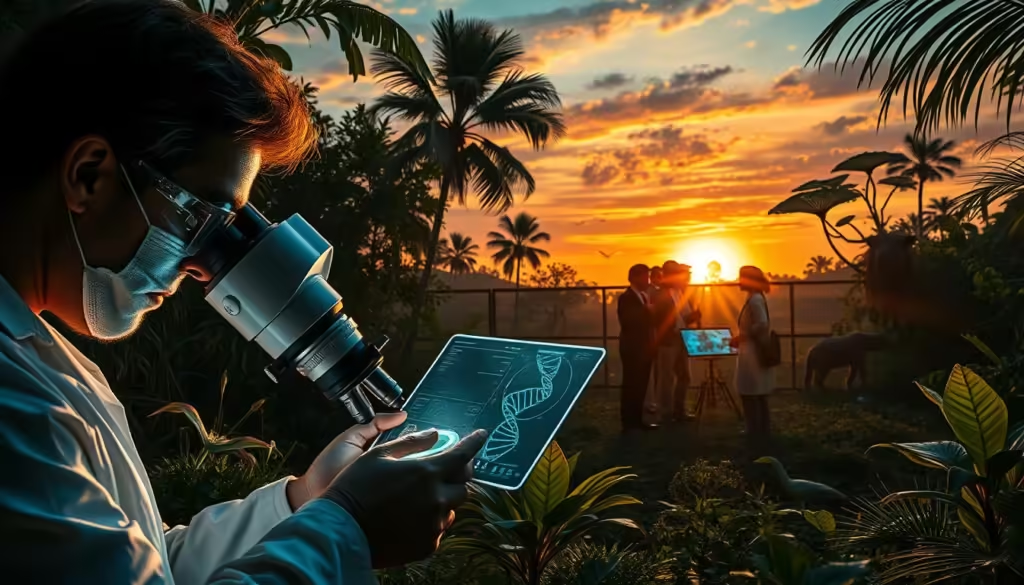
By leveraging these technologies, conservationists can better manage and preserve genetic diversity, ultimately enhancing the chances of survival for endangered species.
Breeding Programs Enhanced by Genomics
By leveraging genomics, conservationists can now design more effective breeding programs for endangered animals. Genomics provides a deeper understanding of the genetic makeup of species, enabling more informed decisions in breeding programs.
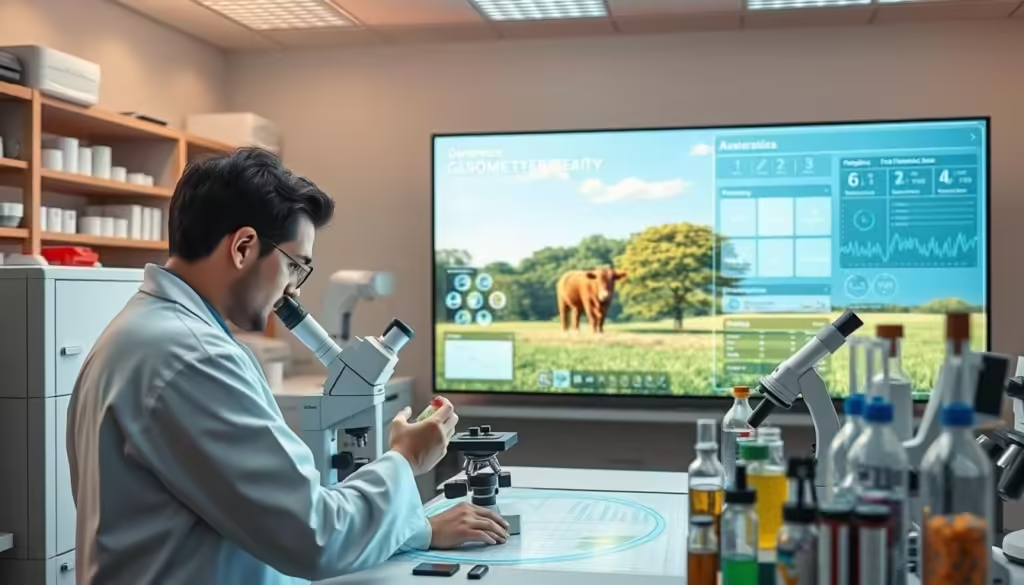
Designing Optimal Mating Pairs
Genomics helps in identifying the most suitable mating pairs by analyzing genetic diversity. This ensures that offspring are healthier and more genetically diverse, enhancing the overall success of breeding programs.
Managing Genetic Diseases in Captive Populations
Genomic technologies allow for the detection and management of genetic diseases within captive populations. By understanding the genetic basis of diseases, conservationists can make informed breeding decisions to minimize the risk of genetic disorders.
Artificial Reproduction Techniques
Artificial reproduction techniques, including in vitro fertilization and cloning, are being increasingly used in breeding programs. These technologies offer new avenues for increasing population sizes and genetic diversity.
In Vitro Fertilization and Cloning Applications
In vitro fertilization (IVF) and cloning are advanced reproductive techniques that can significantly enhance breeding programs. IVF allows for the fertilization of eggs outside the body, while cloning enables the creation of genetically identical individuals. As Dr. Jane Smith, a renowned conservation biologist, notes, “These technologies hold great promise for the conservation of endangered species by maximizing reproductive success.”
“The use of genomics in breeding programs represents a significant leap forward in conservation biology, offering unprecedented opportunities to preserve and protect endangered species.”
By integrating genomics into breeding programs, conservationists can enhance the genetic health and diversity of endangered species, ultimately contributing to their survival and recovery.
Case Study: The Black-footed Ferret Revival
The black-footed ferret, once on the verge of disappearing forever, has seen a remarkable recovery. This species was discovered in 1981 in Wyoming, and at that time, only 18 individuals remained due to habitat loss and disease.
From Near Extinction to Recovery
Conservation efforts began with the establishment of a breeding program. The program’s success was largely due to the application of genomic technologies, which helped manage the remaining genetic diversity among the ferrets.
How Genomics Played a Crucial Role
Genomics was instrumental in identifying the genetic health of the ferret population. By analyzing their genomes, scientists could design optimal breeding pairs, thus maximizing genetic diversity.
Cloning Efforts to Increase Genetic Diversity
Cloning initiatives were undertaken to further boost genetic diversity. Although challenging, these efforts have contributed to the overall health and resilience of the black-footed ferret population, marking a significant milestone in conservation biology.
Case Study: Saving the California Condor
The California condor, one of North America’s most iconic birds, has been on the brink of extinction, but thanks to genomic interventions, its population is slowly recovering. This case study highlights the critical role of genomics in the conservation of this majestic species.
Genomic Management of a Critically Endangered Bird
Genomic technologies have enabled conservationists to manage the California condor population more effectively. By analyzing the genetic diversity of the remaining birds, scientists can identify the most suitable breeding pairs, thus enhancing the chances of survival for the offspring.
Addressing Genetic Health Challenges
One of the significant genetic health challenges faced by the California condor is the presence of lethal genetic mutations.
Screening for Lethal Genetic Mutations
Advanced genomic techniques allow for the screening of lethal genetic mutations, enabling conservationists to make informed decisions about breeding programs. This proactive approach helps in reducing the risk of genetic disorders in the population.
| Genomic Technique | Application in Conservation |
|---|---|
| DNA Sequencing | Identifying genetic diversity and mutations |
| Genome Mapping | Understanding genetic relationships among individuals |
The integration of genomics into the conservation strategy for the California condor has been a game-changer. By addressing genetic health challenges and leveraging genomic management, conservationists are working towards a sustainable future for this critically endangered species.
De-extinction and Genomic Rescue: Pushing the Boundaries
De-extinction efforts, backed by genomic rescue techniques, are pushing the boundaries of species conservation. This emerging field combines advanced genomic technologies with conservation biology to potentially revive extinct species or restore genetic diversity in endangered populations.
The Science Behind Reviving Lost Genetic Diversity
Genomic rescue involves using genetic material from closely related species or historical samples to enhance the genetic diversity of endangered or extinct species. This approach relies on advanced DNA sequencing and editing technologies, such as CRISPR, to accurately identify and manipulate the genes responsible for key traits.
The process begins with obtaining DNA from well-preserved remains or closely related species, followed by genome sequencing and comparison to identify crucial genetic differences.
Ethical Considerations and Limitations
While de-extinction and genomic rescue offer promising conservation tools, they also raise significant ethical concerns. These include the potential for unintended ecological consequences, the welfare of resurrected animals, and the diversion of resources from conserving currently endangered species.
- Ecological impact assessments are crucial before releasing resurrected or genetically modified species.
- The welfare of animals is a primary concern, as resurrected species may face challenges adapting to modern environments.
The Woolly Mammoth Revival Project
A notable example of de-extinction efforts is the woolly mammoth revival project, which aims to bring back a species that went extinct thousands of years ago. By editing the genome of Asian elephants to introduce mammoth traits, scientists hope to create a hybrid that can thrive in cold environments.
The project’s success could provide insights into both the feasibility of de-extinction and the ethical considerations involved.
Earth, Technology, and Environment: Genomics as Green Tech for Sustainability
By leveraging genomics, conservationists are able to develop targeted strategies that enhance sustainability and protect keystone species. Genomics is playing a pivotal role in modern conservation efforts, serving as a powerful tool for preserving genetic diversity and promoting ecosystem health.
Genomics as a Tool for Ecosystem Conservation
Genomics is being increasingly utilized to understand and protect ecosystems. By analyzing the genetic makeup of various species, scientists can identify critical components of ecosystems and develop strategies to conserve them.
Genomic technologies enable the analysis of environmental DNA (eDNA), which helps in monitoring biodiversity and tracking the presence of endangered species. This information is invaluable for conservation efforts, allowing for more effective management of ecosystems.
Preserving Keystone Species for Environmental Balance
Keystone species play a crucial role in maintaining the balance of ecosystems. The loss of these species can have significant cascading effects, leading to ecosystem degradation. Genomics helps in identifying and preserving these species by providing insights into their genetic health and population dynamics.
How Healthy Animal Populations Support Climate Change Resilience
Healthy animal populations are essential for maintaining resilient ecosystems that can withstand the impacts of climate change. By conserving genetic diversity within these populations, genomics contributes to the overall health and adaptability of ecosystems.
| Ecosystem Service | Role of Genomics | Benefit to Sustainability |
|---|---|---|
| Biodiversity Conservation | Analyzing genetic diversity | Enhanced ecosystem resilience |
| Keystone Species Preservation | Identifying genetic health | Maintaining ecosystem balance |
| Climate Change Mitigation | Supporting adaptable populations | Increased ecosystem resilience to climate change |
Challenges and Limitations in Conservation Genomics
As conservation genomics continues to evolve, it encounters several limitations that need to be addressed. The integration of genomic technologies into conservation efforts has shown great promise, but various challenges hinder its widespread adoption.
Technical and Financial Barriers
One of the primary challenges is the technical and financial barriers associated with genomic research. Advanced genomic sequencing and analysis require sophisticated equipment and expertise, which can be costly.
| Technical Challenges | Financial Implications |
|---|---|
| High-throughput sequencing | Equipment and personnel costs |
| Data analysis software | Licensing and maintenance fees |
Balancing Intervention with Natural Selection
Another significant challenge is balancing genomic intervention with natural selection processes. Over-reliance on genetic management can potentially disrupt the natural evolutionary processes of species.
Regulatory and Ethical Considerations
Regulatory and ethical considerations also play a crucial role. The use of genomic technologies in conservation raises questions about the ethics of genetic modification and the need for regulatory frameworks to govern these practices.
In conclusion, while conservation genomics holds great potential, addressing these challenges is crucial for its successful implementation.
Conclusion: The Future of Genomics in Wildlife Conservation
Genomics is revolutionizing wildlife conservation by preserving genetic diversity and breeding healthier animals. As we have seen, the application of genomic technologies is crucial in protecting endangered species.
The future of genomics in wildlife conservation holds much promise. With advancements in DNA sequencing, genome mapping, and gene editing technologies like CRISPR, conservation efforts are becoming more effective. These technologies enable the identification of genetic diversity, detection of genetic bottlenecks, and creation of genetic repositories.
As green tech, genomics contributes to sustainability and environmental balance. By preserving keystone species, genomics helps maintain ecosystem conservation. The potential of genomics to continue advancing conservation efforts is vast, and its role in promoting sustainability is undeniable.
To fully harness the power of genomics in wildlife conservation, it is essential to address the technical, financial, and regulatory challenges. By doing so, we can ensure a future where genomics continues to support the conservation of wildlife and promotes a more sustainable world.
FAQ
What is genomics and how is it used in conservation?
Genomics is the study of the structure, function, and evolution of genomes. In conservation, genomics is used to analyze the genetic diversity of endangered species, identify genetic bottlenecks, and develop breeding programs to preserve healthy populations.
How does genomics help protect endangered species?
Genomics helps protect endangered species by preserving genetic diversity, identifying genetic diseases, and developing breeding programs that promote healthy populations. It also enables the creation of genetic repositories and biobanks to store genetic material for future use.
What is genetic diversity and why is it important?
Genetic diversity refers to the variety of different genes within a species or population. It is essential for the health and survival of species, as it allows populations to adapt to changing environments and withstand diseases.
How does inbreeding affect endangered species?
Inbreeding can lead to a loss of genetic diversity, making populations more vulnerable to diseases and reducing their ability to adapt to changing environments. This can ultimately threaten the survival of endangered species.
What is the role of gene editing technologies like CRISPR in conservation?
Gene editing technologies like CRISPR have the potential to be used in conservation to introduce desirable traits into populations, such as disease resistance. However, their use is still in its infancy, and there are many ethical and regulatory considerations to be addressed.
How is environmental DNA (eDNA) sampling used in conservation?
Environmental DNA (eDNA) sampling involves analyzing DNA that is present in the environment, such as in water or soil. This technique can be used to monitor the presence of endangered species, track population sizes, and identify areas of high conservation value.
What are genetic repositories and biobanks, and how are they used in conservation?
Genetic repositories and biobanks are collections of genetic material, such as DNA or frozen tissues, that are stored for future use. These collections can be used to preserve genetic diversity, develop breeding programs, and support conservation efforts.
How does genomics contribute to breeding programs for endangered species?
Genomics contributes to breeding programs by identifying optimal mating pairs, managing genetic diseases, and developing artificial reproduction techniques. This can help to increase population sizes, improve genetic diversity, and reduce the risk of extinction.
What are some of the challenges and limitations of conservation genomics?
Conservation genomics faces several challenges, including technical and financial barriers, the need to balance intervention with natural selection, and regulatory and ethical considerations. Addressing these challenges will be crucial to realizing the full potential of genomics in conservation.
How can genomics be used to support ecosystem conservation?
Genomics can be used to support ecosystem conservation by preserving keystone species, identifying areas of high conservation value, and developing strategies to maintain ecosystem balance. This can help to promote biodiversity, support ecosystem services, and enhance resilience to climate change.

